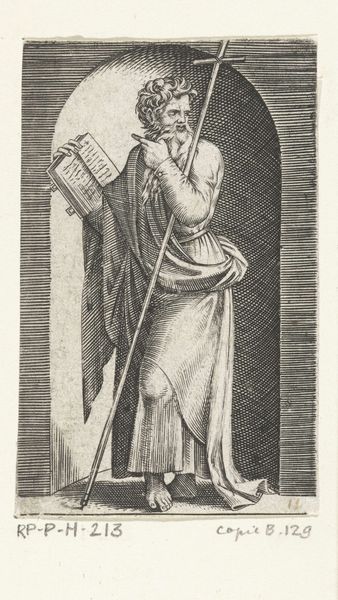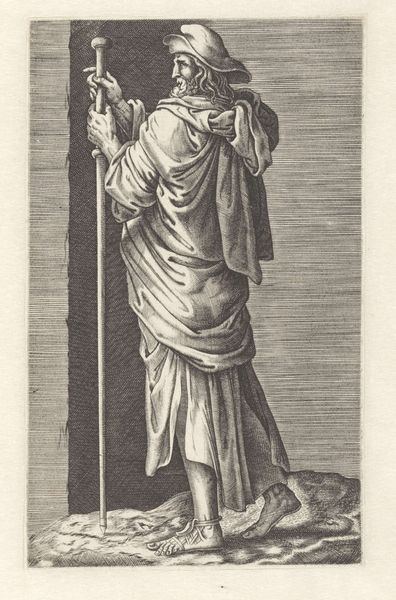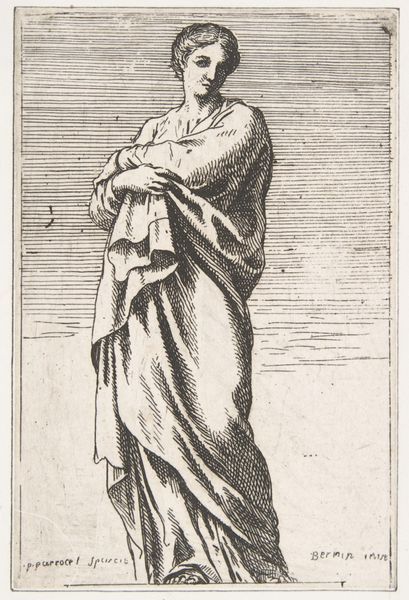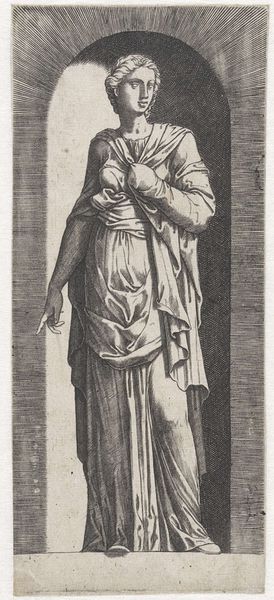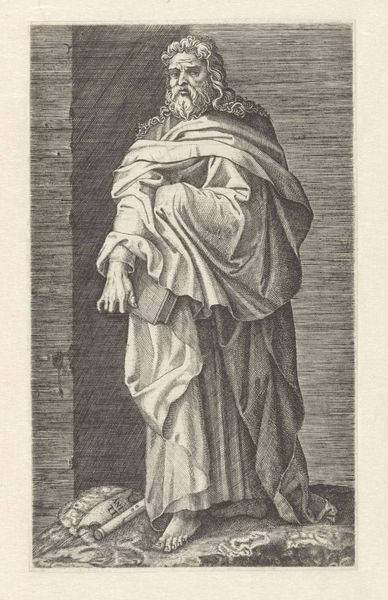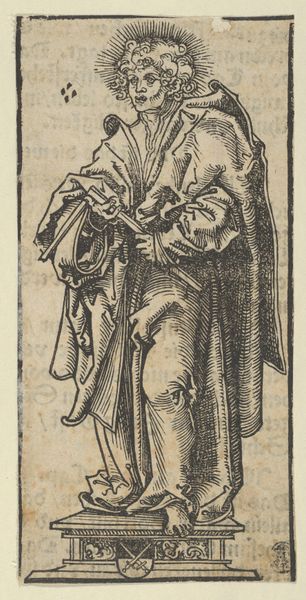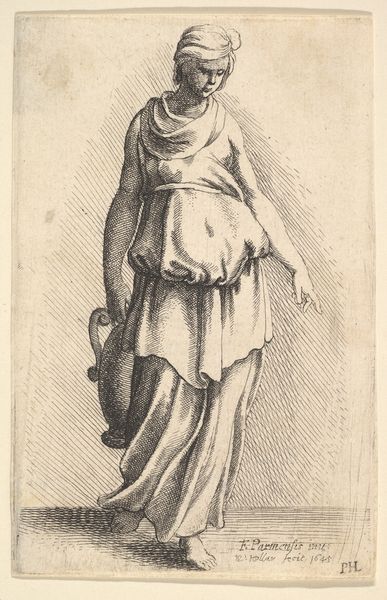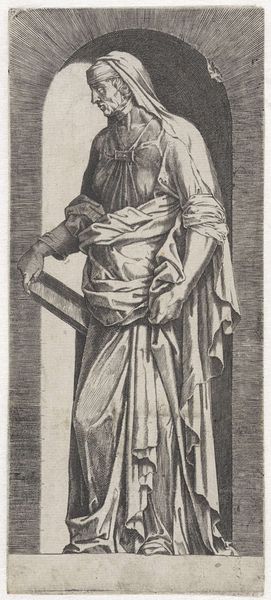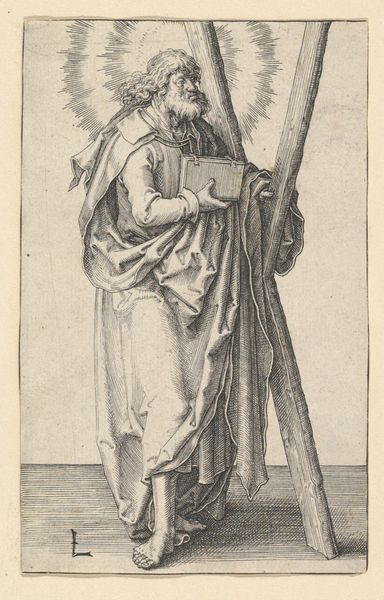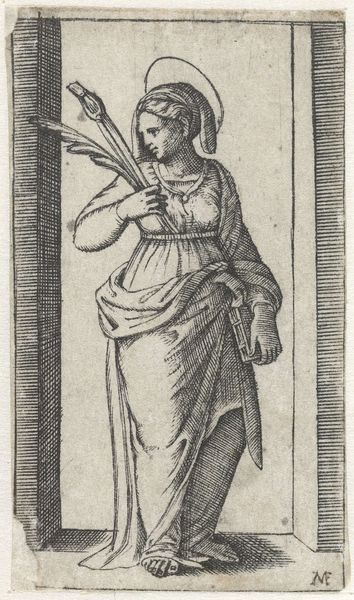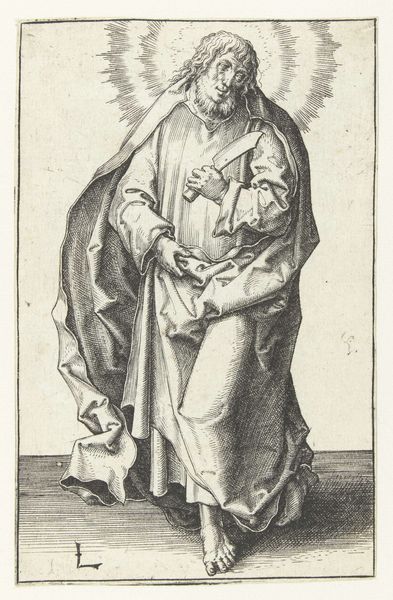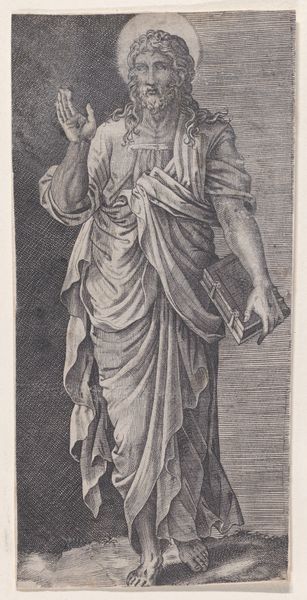
drawing, print, engraving
#
drawing
#
baroque
# print
#
figuration
#
line
#
history-painting
#
nude
#
engraving
Dimensions: sheet: 4 1/2 x 2 11/16 in. (11.4 x 6.9 cm)
Copyright: Public Domain
Curator: We’re looking at Pierre Ignace Parrocel’s “Standing Female Figure,” created around 1739 or 1740. It’s an engraving, currently residing at the Metropolitan Museum of Art. Editor: The hatching technique is so dominant. All those lines create a somber and unsettling atmosphere, almost like a cage around the figure. What sort of cultural narratives would someone be layering into their engravings at this moment? Curator: During that time, history paintings and allegorical representations were experiencing heightened attention. This figure, with her contrapposto stance and classical drapery, evokes images of ancient goddesses or allegorical virtues that served as visual rhetoric during a turbulent period for the French aristocracy. The line work becomes important in producing prints to be more quickly and widely circulated. Editor: And yet there's also a vulnerability. The figure isn't idealized; her pose looks precarious and the fabric feels thin and cheaply reproduced, compared to the wealth usually symbolized. What was Parrocel thinking about access when creating these? It’s fascinating to see someone so openly challenging expectations of aristocratic power. Curator: Consider the function of drawings and engravings within the broader context of artistic patronage at the time. Parrocel created these in response to those societal changes, using print to influence wider audiences beyond traditional aristocratic circles. This shows the burgeoning public sphere of art. Editor: Absolutely. Seeing the grid of lines so plainly emphasizes that reproductive labor and the socio-economic changes associated with printmaking—an art for the masses and their spaces. This makes me see it not just as a depiction of power, but a document reflecting class. Curator: Precisely. The work exists within, and responds to, that societal framework, embodying both traditional imagery and progressive distribution methods. Editor: It changes the way you see art being mobilized! And looking again, the figure’s turned gaze—that look of seeking a better alternative or better situation. It is much to absorb when considering the economic moment. Curator: Indeed. By understanding these complex connections, we gain deeper insights into both the art and the societies they mirror and shape.
Comments
No comments
Be the first to comment and join the conversation on the ultimate creative platform.
